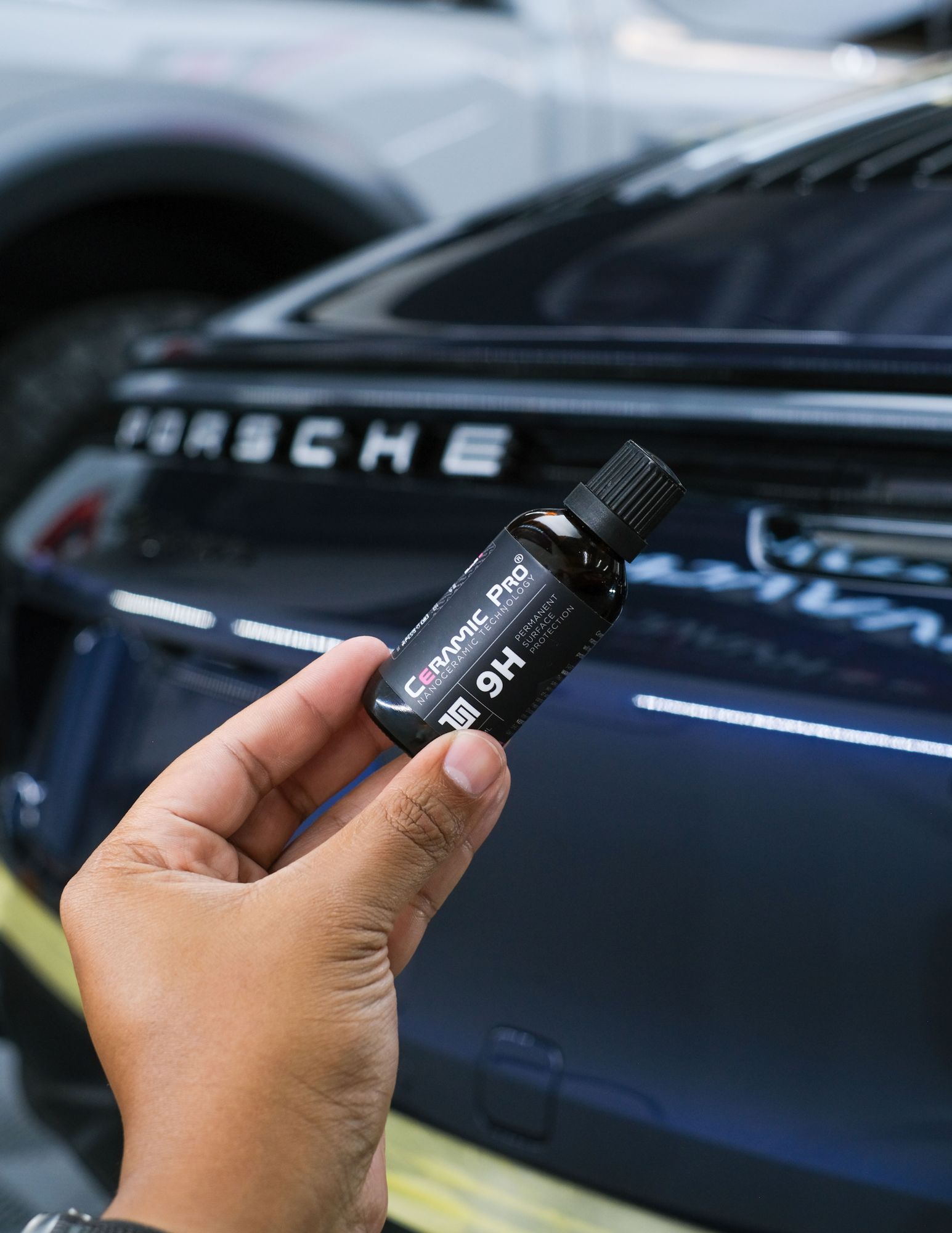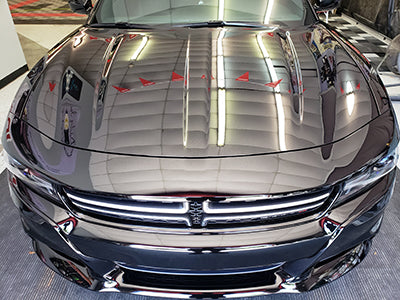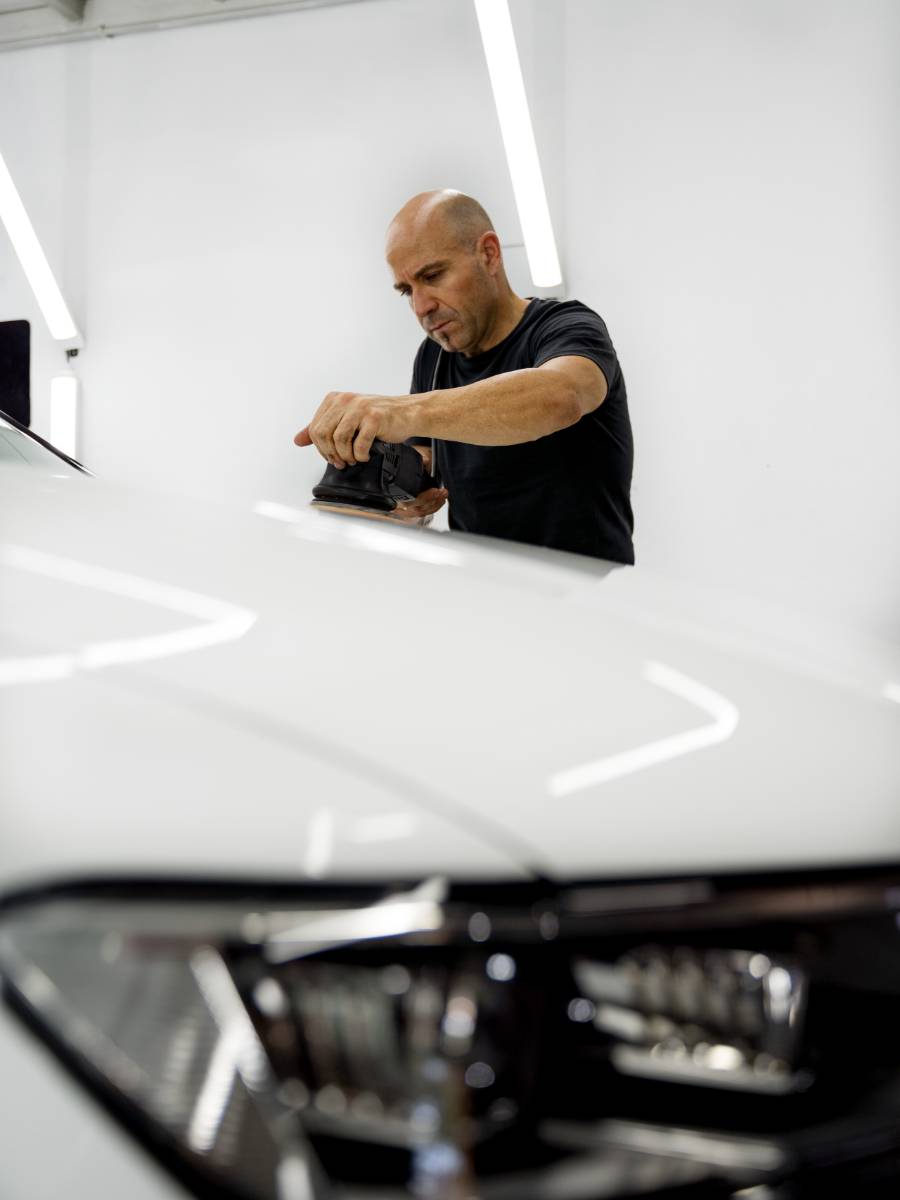Ceramic Finishing vs. Conventional Wax: Which Offers Much Better Long-Term Defense?
The argument in between ceramic layers and conventional wax for automobile protection has actually garnered significant attention among automobile enthusiasts and experts alike. While both satisfy of securing paint, their distinctions in toughness, application, and long-lasting maintenance prices might affect a customer's option. Ceramic finishings boast superior long life and resistance to ecological elements, yet the intricacy of their application elevates concerns concerning ease of access and functionality. As we check out these contrasting alternatives, it becomes vital to take into consideration not only the prompt advantages but also the effects for automobile treatment gradually.
Overview of Ceramic Finish
Ceramic coating has gotten considerable popularity among vehicle fanatics and detailers alike due to its advanced protective qualities. This ingenious technology is developed to create a sturdy, hydrophobic guard over a lorry's paint surface area, significantly improving its resistance to environmental impurities such as dirt, UV rays, and chemical discolorations. Unlike typical wax, which supplies a momentary layer of defense, ceramic coverings bond at a molecular degree with the paint, using resilient toughness-- often prolonging past two years with correct maintenance.
The application procedure entails precise prep work of the car's surface area, consisting of cleaning and brightening to make certain optimum attachment. When used, the covering treatments to create a robust layer that not only includes deepness and gloss to the paint yet likewise simplifies maintenance. With its hydrophobic properties, ceramic layer allows water and dirt to glide off more easily, decreasing the frequency of cleans and lessening the danger of swirl marks.
In addition, ceramic finishings are available in numerous formulations, enabling customers to pick items tailored to their particular demands and preferences. Overall, ceramic layer represents a significant innovation in paint defense technology, supplying exceptional efficiency contrasted to conventional alternatives.
Review of Standard Wax
Traditionally considered as a staple in vehicle care, wax works as a prominent option for those looking for a simple method to enhance and safeguard their vehicle's paint - ceramic coating. Automotive wax normally makes up natural active ingredients, such as carnauba, or artificial compounds, designed to produce a safety layer externally of the paint. This layer not only boosts the car's gloss and beam but additionally offers an obstacle against ecological pollutants
The application of wax is usually straightforward, making it available for both professionals and do it yourself enthusiasts. It can be applied by hand or machine, enabling for flexibility in the detailing procedure. Once applied, wax calls for a treating duration, after which it solidifies to create a protective covering. Wax is additionally known for its capacity to push back water, promoting a beading impact that assists in the avoidance of water spots and rust.
Nonetheless, while wax works for improving the visual allure of a vehicle, it is crucial to keep in mind that the defense it provides may require extra frequent reapplication compared to alternative products, such as ceramic layers. In general, conventional wax stays a popular alternative for those focusing on ease of use and prompt visual renovation.
Resilience and Durability Contrast
While both ceramic coverings and standard wax offer protective benefits for automobile paint, their toughness and long life vary dramatically. Typical wax, typically made from natural carnauba or synthetic polymers, generally provides a safety layer that lasts about 3 to 6 months. This fairly brief life expectancy requires regular reapplication to maintain optimum defense.
In comparison, ceramic coverings are crafted from advanced nanotechnology, developing a covalent bond with the paint surface area. you can try this out This results in a robust, hydrophobic layer that can sustain for two to 5 years, relying on the item and environmental conditions. The remarkable durability of ceramic coverings is credited to their chemical structure, which supplies boosted resistance to scratches, UV rays, and oxidation.

Protection Versus Ecological Aspects
Protecting an automobile's paint from environmental aspects is essential for keeping its look and value with time. Automobiles are regularly exposed to a range of components, including UV rays, bird droppings, tree sap, acid rainfall, and roadway grime, every one of which can endanger the integrity of the paintwork.
Ceramic layers offer a durable protection against these environmental assailants. Unlike traditional wax, which can break down promptly under UV exposure, ceramic finishings create a durable, hydrophobic layer that withstands the dangerous effects of sunlight and environmental contaminants. This innovative technology creates a chemical bond with the automobile's surface area, providing premium protection that lasts for years, even in extreme problems.
In comparison, ceramic coatings keep their protective qualities much longer, dramatically lowering the risk of paint damage and ensuring that the vehicle preserves its visual allure. As an outcome, ceramic coverings are significantly recognized as the remarkable selection for lasting defense against ecological factors.
Application and Upkeep Distinctions
The techniques of application and succeeding maintenance for ceramic coatings informative post and conventional wax differ considerably, influencing the general user experience and effectiveness of each item. Ceramic layers need an even more intricate application procedure, typically including surface area preparation that consists of cleaning, decontaminating, and polishing the lorry. Once the surface prepares, the ceramic covering is applied in a regulated environment, typically requiring specialist know-how to make certain proper treating and bonding to the paint.

While both products improve automobile look, the longer-lasting security used by ceramic finishes might warrant their first financial investment, regardless of the even more requiring application procedure. Alternatively, standard wax continues to be a preferred option for those looking for an easier, albeit short-term, service.

Verdict
Finally, ceramic layers show substantial benefits over typical wax in regards to toughness and environmental management. With a life-span prolonging two to five years and superior resistance to UV rays, dust, and chemical discolorations, ceramic layers supply an extra efficient service for long-term vehicle upkeep. The application process might need professional proficiency, the resulting price financial savings and decreased regularity of reapplication highlight the value of ceramic layers for those looking for optimal lorry security.
The debate in between ceramic finishings and traditional wax for lorry security has actually gathered substantial interest amongst vehicle enthusiasts and specialists alike. Unlike conventional wax, which gives a short-term layer of defense, ceramic finishings bond at a molecular degree with the paint, using long-lasting toughness-- frequently expanding beyond two years with correct maintenance.
While both ceramic finishes and traditional wax deal safety benefits for vehicle paint, their toughness and longevity vary significantly. For automobile fanatics seeking long-lasting defense, ceramic coatings provide an engaging benefit over traditional wax products.
In final thought, ceramic layers demonstrate considerable benefits over typical wax in terms of durability and environmental security.